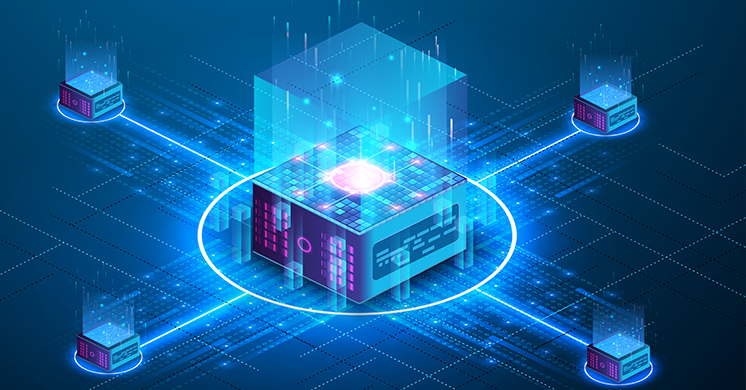
Blockchain Infrastructure Development: The Backbone of Decentralized Innovation
Blockchain technology, since its inception with the launch of Bitcoin in 2009, has evolved into a powerful decentralized framework that underpins various industries. Initially hailed as a financial disruptor, blockchain has since grown into a versatile tool for sectors such as healthcare, supply chain management, real estate, and governance. Central to this transformation is the development of blockchain infrastructure, the backbone that allows decentralized systems to function securely, efficiently, and at scale.
Blockchain infrastructure has undergone significant changes since its early days. While Bitcoin laid the foundation, Ethereum introduced smart contracts in 2015, allowing programmable transactions that expanded blockchain’s potential beyond simple value transfers. This was the first major leap in blockchain infrastructure development, facilitating decentralized applications (dApps) that execute code without the need for intermediaries.
Key phases in blockchain infrastructure development
1.Bitcoin Era (2009-2015)
- Focused primarily on decentralized finance and simple peer-to-peer transactions.
- Relied on the Proof of Work (PoW) consensus mechanism, which, while secure, is energy-intensive and slow.
- Smart Contract Platforms (2015-Present)
- This era also gave rise to alternative platforms like Binance Smart Chain, Polkadot, and Solana, which addressed specific limitations of earlier blockchains
- The introduction of Layer-2 scaling solutions (e.g., Lightning Network, Optimistic Rollups) and cross-chain bridges has enabled faster and more cost-efficient transactions.
- Interoperability protocols like Polkadot and Cosmos are breaking down the silos between various blockchain ecosystems, allowing them to communicate and share data seamlessly.
- Blockchain's reach has expanded to decentralized finance, non-fungible tokens (NFTs), and decentralized autonomous organizations (DAOs), pushing the need for robust infrastructure to handle the scale, security, and governance required by these applications.
Core Components of Blockchain Infrastructure
1. Consensus Mechanisms: Consensus mechanisms are algorithms that allow distributed networks to agree on the validity of transactions. In decentralized systems, there is no central authority, so consensus mechanisms ensure that all participants in the network agree on the state of the ledger.
- Proof of Work (PoW): Introduced with Bitcoin, PoW requires nodes (miners) to solve cryptographic puzzles to validate transactions. While secure, PoW is resource-intensive and slow, making it less suitable for applications requiring high throughput.
- Proof of Stake (PoS): PoS reduces the need for computational power by allowing validators to create new blocks based on the number of coins they hold and are willing to "stake." PoS is faster and more energy-efficient than PoW, as seen in networks like Ethereum 2.0 and Cardano.
- Delegated Proof of Stake (DPoS): DPoS further refines PoS by allowing token holders to elect delegates who validate transactions on their behalf. It’s used in platforms like EOS and Tron, offering even higher throughput and scalability.
- Other Mechanisms: Newer consensus algorithms, such as Proof of Authority (PoA) and Proof of History (PoH), are gaining popularity, especially in specialized use cases like private blockchains or high-performance platforms like Solana.
- Full Nodes: These nodes store the entire history of the blockchain, ensuring the network's transparency and security.
- Light Nodes: Unlike full nodes, light nodes store only the most critical parts of the blockchain. They are faster and more efficient but rely on full nodes for complete data validation.
- Validator Nodes: These nodes play a crucial role in consensus mechanisms like PoS, as they validate and propose new blocks.
- Lightning Network: Built for Bitcoin, Lightning Network enables instant payments by creating off-chain channels between users.
- Plasma and Rollups: These Ethereum Layer-2 solutions allow for faster transaction processing by batching multiple transactions into a single block.
- Polkadot: Uses a system of parallel blockchains (Para chains) that communicate with each other and with external chains.
- Cosmos: Built using the Tender mint consensus algorithm, Cosmos enables blockchains to transfer assets and data between each other using the Inter-Blockchain Communication (IBC) protocol
- Ethereum: The most widely used platform for smart contracts, Ethereum powers thousands of dApps and DeFi protocols.
- Alternative Platforms: Other blockchains, such as Binance Smart Chain, Avalanche, and Solana, offer smart contract capabilities with improved scalability and lower fees compared to Ethereum.
- Chainlink: The most prominent oracle service, Chainlink provides secure and reliable real-world data to blockchains.
- Band Protocol: Another oracle solution, Band focuses on scalability and cross-chain compatibility.
- Decentralized Autonomous Organizations (DAOs): These are self-governing organizations where decisions are made collectively by token holders. DAOs manage everything from development proposals to financial decisions, ensuring transparency and decentralization.
- On-Chain and Off-Chain Governance: Some platforms, like Tezos, enable changes to the protocol to be voted on and implemented automatically on-chain. Others, like Bitcoin, rely on off-chain governance, where decisions are made informally by core developers and stakeholders.
Challenges in Blockchain Infrastructure Development
1. Scalability: One of the most significant challenges for blockchain is scalability. Bitcoin and Ethereum, the two most prominent blockchains, can only process a limited number of transactions per second, leading to high fees and slow transaction times during periods of congestion. Layer-2 solutions and alternative consensus mechanisms offer promise, but there is still much work to be done to achieve the scalability needed for mass adoption.
2. Security: Security is a paramount concern for blockchain networks. While the immutability of blockchain records is one of its greatest strengths, this same feature makes rectifying hacks or exploits difficult. In 2021 alone, DeFi protocols lost billions due to vulnerabilities in smart contract code. Developing secure smart contracts and infrastructure is crucial for blockchain's future.
3. Interoperability: As the number of blockchain platforms increases, interoperability has become a pressing issue. Current solutions like Polkadot and Cosmos provide bridges between different chains, but these solutions are still in their early stages, and a unified standard is yet to emerge.
4. Energy Consumption: PoW-based blockchains, such as Bitcoin, have been criticized for their high energy consumption. Ethereum's transition to PoS and the growth of energy-efficient consensus mechanisms offer potential solutions, but the debate about the environmental impact of blockchain remains ongoing.
5. Regulation and Compliance: Blockchain operates in a decentralized, often unregulated environment. However, as adoption grows, governments worldwide are increasingly looking at ways to regulate the industry. Striking a balance between decentralization and regulatory compliance will be essential for the future of blockchain infrastructure.
Future Trends in Blockchain Infrastructure Development
1. Modular Blockchain Architecture: `Traditional blockchains operate as monolithic structures, where consensus, data availability, and execution are all handled by a single chain. Modular blockchains, on the other hand, separate these functions into distinct layers, allowing for greater flexibility and scalability.
- Rollups: Rollups bundle transactions into a single batch before sending them to the main chain for execution. This modular approach reduces congestion on the base layer.
- Data Availability Layers: Chains like Celestia are focusing on separating data availability from execution, enabling other blockchains to run efficiently while ensuring data transparency.
- ZK-Rollups: This scaling solution uses ZKPs to bundle transactions and prove their validity without requiring every node to verify each transaction individually.
- ZK-SNARKs and ZK-STARKs: Cryptographic techniques used in privacy-focused blockchains like Zcash to enable anonymous transactions.
4. Integration with Artificial Intelligence (AI) and Internet of Things (IoT): The convergence of blockchain with AI and IoT holds immense potential. AI algorithms can analyze and optimize blockchain data, while IoT devices can leverage blockchain for secure and transparent data exchange.
- IoT and Blockchain: IoT devices generate vast amounts of data, and blockchain can provide a secure, decentralized method for managing and monetizing this data.
- AI and Smart Contracts: AI can automate and optimize smart contract execution, leading to more efficient and autonomous systems
Why Choose VCD Studio for Your Blockchain Infrastructure Development Needs?
VCD Studio is dedicated to delivering high-quality blockchain infrastructure development services that drive success for your business. 
Conclusion
Blockchain infrastructure development is at a critical juncture. As the technology continues to mature, it faces both exciting opportunities and daunting challenges. Scalability, interoperability, security, and governance will remain key areas of focus in the coming years. Emerging trends such as modular blockchain architectures, ZKPs, and the integration of blockchain with AI and IoT offer a glimpse into a future where decentralized systems are more scalable, secure, and versatile.
The continued evolution of blockchain infrastructure will unlock new possibilities for industries ranging from finance to healthcare, supply chains, and beyond. By addressing its current limitations, blockchain has the potential to become a foundational technology that powers the digital economy of the future.

Leave a Comment